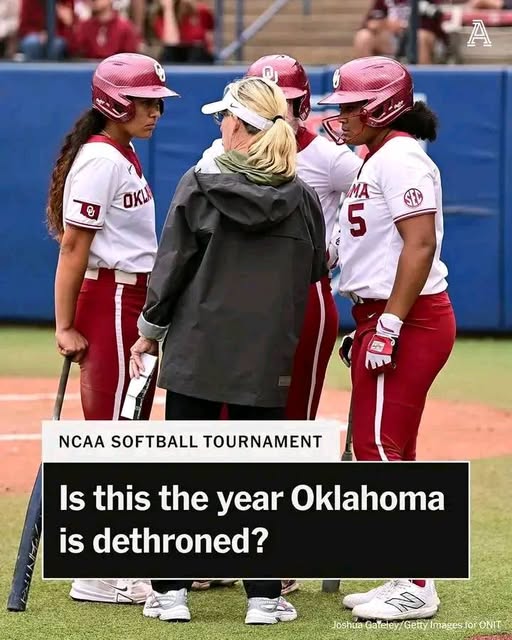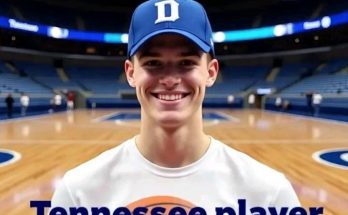Oklahoma’s dominance in NCAA softball has been nothing short of extraordinary. Winning four consecutive national championships is a feat that places the Sooners in a rarefied category of sustained excellence, underscoring not only their talent but also their culture of winning and relentless pursuit of perfection. Their streak, beginning in 2021 and extending through 2024, has set a benchmark that few programs in any sport have achieved, particularly at the collegiate level where roster turnover and competitive balance typically prevent such prolonged supremacy. Yet, despite their impressive record and the momentum carried from recent seasons, there is a growing consensus within the softball community—and among fans, analysts, and rival coaches alike—that the Oklahoma Sooners are more vulnerable than ever. This shift in perception is fascinating, given how deeply ingrained Oklahoma’s winning identity has become, and it invites a closer examination of the factors contributing to this new reality.
The Sooners’ success over the last four years has been built on multiple pillars, including exceptional recruiting, a coaching staff with a visionary approach, and a player development program that consistently turns high school phenoms into elite collegiate athletes and professional prospects. Head Coach Patty Gasso has been the architect of this dynasty. Her ability to attract top-tier talent, foster team cohesion, and adapt tactically to opponents has been instrumental in the program’s dominance. Moreover, Oklahoma’s reputation as a softball powerhouse makes it a magnet for some of the nation’s best recruits, ensuring that the team’s talent pipeline remains strong year after year. This pipeline has produced standout players who excel in every position, from pitching and hitting to defense, enabling the Sooners to control games and impose their will on opponents.
However, sustaining this level of dominance inevitably comes with challenges that may not be immediately visible in the win-loss column but become apparent when analyzing team dynamics and the shifting landscape of collegiate softball. One of the most significant factors contributing to the Sooners’ perceived vulnerability is the evolving competitiveness of the NCAA softball field. Over the last decade, the sport has experienced remarkable growth, with more programs investing heavily in facilities, coaching, and recruiting. This democratization of talent means that more teams can realistically challenge for the title, narrowing the gap that Oklahoma once seemed to have on the rest of the field. Programs like UCLA, Florida State, Washington, and Arkansas, among others, have consistently closed in on Oklahoma, developing deeper rosters and greater tactical sophistication, thereby making the national championship landscape far more competitive.
The transfer portal, in particular, has transformed college sports, and softball is no exception. With athletes having more freedom to move between programs, teams have become more dynamic and unpredictable. This new mobility allows rivals to poach Oklahoma’s players or rapidly improve their own rosters by adding experienced transfers. While Oklahoma’s culture and coaching staff have historically fostered player retention and loyalty, the increased fluidity in college athletics creates vulnerabilities that simply did not exist a decade ago. Losing key contributors to other programs or seeing competitors reinforce their lineups with experienced talent through transfers presents a constant challenge to the Sooners’ depth and continuity.
Another subtle but impactful reason for the Sooners’ newfound vulnerability lies in the inevitable pressure and expectations that come with being the reigning champions for so long. Success breeds attention, and with that attention comes increased scrutiny and pressure. The mental and emotional toll on players and coaches who must continually perform at a championship level cannot be underestimated. Maintaining the hunger and intensity that drove the team to four straight titles requires tremendous psychological resilience. Opponents enter games highly motivated, often elevating their performance simply because they are facing the top-ranked team with a proven winning pedigree. This dynamic forces the Sooners to dig deeper and innovate constantly, yet human nature suggests that sustaining such peak levels of motivation and focus over multiple seasons is extraordinarily difficult.
In addition to external challenges, internal team dynamics inevitably shift over time. Player turnover is a natural part of college athletics; graduating seniors, players leaving early for professional careers, or those deciding to transfer out impact the roster’s stability. Even with strong recruiting, the process of integrating new players and establishing chemistry takes time. The current Oklahoma roster may not yet have fully gelled, especially if younger players are filling roles left by departing stars. The challenge of maintaining a championship-caliber team is compounded by the need to constantly rebuild leadership and experience within the squad. While the Sooners have a strong track record of developing young talent quickly, the transition period can create short-term vulnerabilities that opponents can exploit.
Strategically, rival teams have had four years to study Oklahoma’s style of play in great detail. The Sooners’ offensive patterns, pitching strategies, and defensive schemes are well-documented and analyzed by coaches around the country. This familiarity allows opponents to prepare more effectively, creating tactical matchups that can disrupt Oklahoma’s rhythm. As other programs evolve and innovate their approaches, the Sooners face the challenge of staying one step ahead, adapting their strategies to counter emerging trends and exploit weaknesses in opponents’ defenses. The coaching staff’s ability to innovate tactically and respond to opponents’ adjustments will be critical in sustaining their dominance.
Physical wear and tear is another factor that cannot be ignored. Softball is a demanding sport, and pitchers especially face the risk of injury or fatigue over the course of long seasons and deep postseason runs. The strain on key players can impact performance and availability, and depth becomes paramount when injuries strike. While Oklahoma’s roster depth has been a strength, no team is immune to the physical toll of consecutive championship campaigns. Balancing playing time, managing workloads, and keeping players healthy will be a key determinant of the Sooners’ ability to maintain their edge in high-pressure postseason environments.
The cultural and psychological aspects of competition also come into play. The label of being “too dominant” can sometimes breed complacency or an unconscious easing of intensity. Players who have experienced repeated success may face challenges in maintaining the same hunger and drive that propelled them earlier in their careers. Conversely, rival teams are fueled by the opportunity to dethrone the reigning champions, bringing an extra level of intensity and preparation to matchups against Oklahoma. This underdog mentality can elevate competitors’ performances in ways that disrupt even the most disciplined and talented teams.
Moreover, the recruiting landscape is shifting in ways that present new challenges for Oklahoma. While they have traditionally been able to attract the nation’s top talent, the rise of other programs means increased competition for recruits. Prospective student-athletes now have more options than ever, with programs offering state-of-the-art facilities, strong academic support, and competitive playing environments. This diversification in recruiting success among elite programs could dilute Oklahoma’s pipeline, especially if younger recruits are swayed by emerging programs with compelling visions and resources. The ability to maintain recruiting dominance will require continued investment, relationship-building, and an emphasis on player development and opportunity.
On a broader level, the growth of professional softball leagues and increased visibility of the sport are also influencing the collegiate landscape. Aspiring players see viable professional careers post-college, which may affect their collegiate commitments and decisions. The interplay between collegiate programs and professional opportunities creates new dynamics around player motivation, development priorities, and career planning. Oklahoma’s program must navigate these evolving priorities while continuing to cultivate a team-first culture focused on collegiate success.
Despite these challenges, it would be a mistake to discount the Sooners’ ability to respond and adapt. History shows that successful programs often face adversity and vulnerability only to emerge stronger through innovation and resilience. Oklahoma’s coaching staff is renowned for its ability to recruit elite talent and develop players into national champions. The program’s infrastructure, tradition, and support systems provide a strong foundation upon which to build new cycles of success. The lessons learned from previous championships, coupled with a motivated roster hungry to uphold the legacy, can translate into renewed focus and determination.
Additionally, the Sooners’ style of play remains among the most dynamic and effective in collegiate softball. Their balanced approach—combining power hitting, strategic small ball, and dominant pitching—continues to make them a formidable opponent. While others have adapted to some extent, Oklahoma’s capacity to execute under pressure and perform consistently at a high level is a hallmark of their program. They possess players who are capable of game-changing performances, and their ability to rise to big moments has been proven time and again. The question is not whether the Sooners can still compete for championships, but whether the broader softball ecosystem has evolved enough to level the playing field.
Looking ahead, the Sooners face a season that promises to test their mettle like never before. The softball world is watching closely, eager to see if Oklahoma can defy the growing chorus of doubt and reaffirm their status as the sport’s preeminent program. Rival programs have invested heavily and are hungry for their chance to end the Sooners’ reign. The transfer portal, evolving recruiting battles, heightened competition, and the natural cycles of team building combine to create an environment ripe for change. The Sooners must rely on their proven strengths—coaching, player development, mental toughness, and tactical flexibility—to navigate these challenges.
In conclusion, Oklahoma’s four consecutive NCAA Softball National Championships have established them as a dynasty, but with great success comes great scrutiny and rising challenges. The perception that the Sooners are more vulnerable than ever is shaped by the increasing competitiveness of NCAA softball, the transformative impact of the transfer portal, internal team transitions, strategic adjustments by rivals, and the psychological and physical toll of sustained excellence. While these factors contribute to the sense of vulnerability, they also present an opportunity for Oklahoma to demonstrate their resilience, innovation, and championship pedigree. The Sooners’ future will be a testament to how elite programs adapt to evolving landscapes and maintain their drive to win, and whether they can extend their legacy in the face of the softball world’s shifting tides remains one of the sport’s most compelling narratives.



